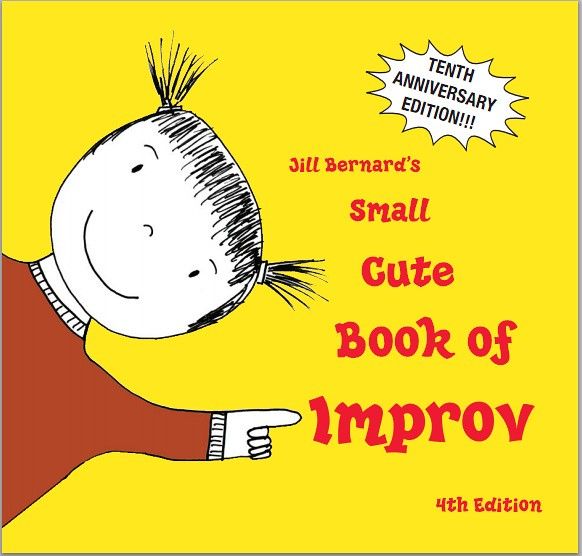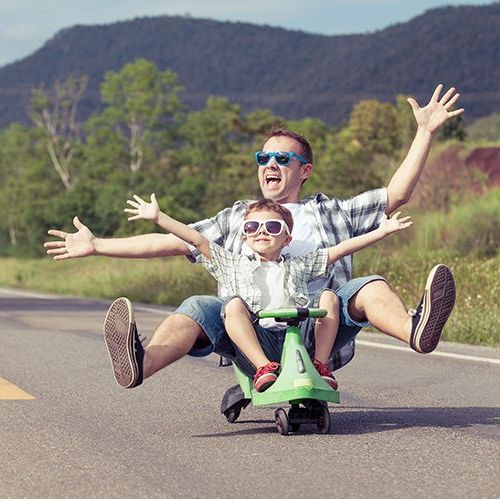The Merlin Works Late Summer 2024 Feature Article
Have you ever read a Real Simple Magazine? Nothing makes me feel more messy and overwhelmed than thumbing through their pages of minimalist lifestyle tips with titles such as:
How to Clean Your Walls—Whether Painted, Wallpapered, or Brick
91 Cooking Tricks and Tips From the Real Simple Test Kitchen
How to Find Your Procrastination Style—and Then Stop Procrastinating for Good
That’s my cue to crawl back into bed and scroll TikTok endlessly.
This is my general problem with self-help. It just sounds like more work. I don’t need work! I need help!
This is why at Merlin Works, Rule #1 is to have fun. I already get groceries, pay my bills, vote in every election, and schedule my kids’ dental appointments. On top of all that you want me to do what now? Forget it!
But when I listened to the 59 minute audiobook Creativity: A Short and Cheerful Guide by John Cleese I had the opposite response. (And if you are interested in the improv equivalent, I recommend Jill Bernard’s Small Cute Book of Improv)


Turns out, the way to get more creative is actually pretty fun. There was a study performed by Berkley Psychology Professor Donald W. MacKinnon on creativity in architects, who have to balance imaginative design with structures that actually stay standing. MacKinnon had the most and least creative architects (based on peer scoring) report what they did in a day. Cleese writes:
“The conclusion he came to was that there were only two differences between the creative and the uncreative architects.
The first was that the creative architects knew how to play.”
Yes! Play is fun by definition. In fact Peter Gray, a leading researcher on play defines it as an activity that is:
- Freely chosen and directed by the players,
- Intrinsically motivated (conducted for its own sake rather than some reward outside of itself),
- Structured by rules within the player’s mind,
- Always creative and usually imaginative, and
- Conducted in an active, alert, but relatively non-stressed frame of mind.


For many people, taking an improv class is a return to the play that was so intuitive to them as a child. Improv warmups help us get back to that state of play. The games help us transition from the tedium of everyday life to the magical world of creativity. Although getting off the couch and into the theater might be tough some days, the actual joining in on Zip Zap Zop can be practically irresistible.
Back to Cleese’s book and the second finding of what differentiated creative and uncreative architects study:
The creative architects always deferred making decisions for as long as they were allowed… (which) simply means that they are able to tolerate that vague sense of discomfort that we all feel when some important decision is left open, because they know that an answer will eventually present itself…”
Now, I know increasing your tolerance for uncertainty sounds like the most uncomfortable of chores, but another way to think of it is…procrastination!
Procrastination can be a strategy for creativity!

Cleese continues:
“If you have a decision to make, the first question you must ask is: ‘When does this decision have to be made?’ …. if you can wait longer, two incredibly important things may happen.
You may get new information.
You may get new ideas.
So why would you make a decision when you don’t need to?
Because you’re uncomfortable, that’s why!
You see, leaving a question unresolved, just leaving it open, makes some people anxious. They worry. And if they can’t tolerate that mild discomfort, they go ahead and rush the decision. They probably think that they’re being decisive.
But creative people are much better at tolerating the vague sense of worry that we all get when we leave something unresolved. So if, like the creative architects, you can tolerate that anxiety, you will be able to give yourself the time to come up with a better decision.”
Now, an important caveat, procrastination is not a great strategy for dealing with uncreative issues you might be anxious about: calling the doctor back, getting to the gym, filing your taxes. For those things you anxiously avoid, a swift and direct approach is probably the best move.
Don’t let us forget the Two Minute Rule: Coined by David Allen in Getting Things Done, the two-minute rule states that “If an action will take less than two minutes, it should be done at the moment it’s defined.”
Still, it’s nice to know that the parts of us that we often label as “unproductive,” like wanting to goof off and delay work, might just be our creative process after all.

